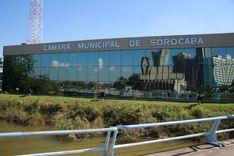Ministry of Health and ANVISA receive Technical Note identifying 481 barriers to scientific development of cannabis in Brazil
Document developed by a group with 31 Brazilian academic and research institutions points out regulatory barriers and suggests an agile framework to strengthen the scientific and technological sector
Published on 08/15/2025

Group formed by 31 Brazilian academic and research institutions — delivered a Technical Note with recommendations to enhance cannabis research in Brazil. Image: Ca
The Scientific Regulation of Cannabis Working Group — formed by 31 Brazilian academic and research institutions — delivered a Technical Note with recommendations to enhance cannabis research in Brazil to the Ministry of Health and the National Health Surveillance Agency (ANVISA).
A total of 132 researchers participated in the institutional consultation, identifying 481 problems and barriers that hinder scientific development in the field. These points were analyzed, grouped, and organized into seven thematic axes. For each problem, solutions accompanied by technical justifications were proposed.
Identified critical barriers
The document revealed obstacles that affect both basic and applied research — clinical, pharmaceutical, veterinary, agronomic, and others. Among them:
- Bureaucracy and legal uncertainty: Slow authorization processes, disproportionate requirements, and overlapping demands from agencies such as ANVISA, MAPA, Ministry of Health, Federal Police, and internal committees;
- Access to standardized inputs: Difficulty in accessing standardized inputs, such as purified cannabinoids, genetic kits, extracts, seeds, and cultivars;
- Cultivation restrictions: Arbitrary limits of Tetrahydrocannabinol (THC) hinder comparative studies and reproducible protocols;
- Bureaucracy in material flow: Obstacles to the circulation of samples between institutions and uncertainties about the use of by-products and derivatives;
- Research with production animals: Lack of clear protocols for veterinary and agricultural studies;
“These regulatory barriers create a vicious circle: they discourage researchers, limit innovation, and deepen Brazil's technological dependence in a strategic sector,” points out the technical note.
Impacts of current regulations
The document also criticizes points in ANVISA's resolutions (RDC 327/2019 and RDC 660/2022), which, according to the Working Group, create ambiguities about THC levels, use of nanotechnology, and administration routes.
For the researchers, these norms need to be reviewed to ensure legal certainty and allow national science to advance. “The limitations imposed on commercial production cannot translate into barriers to scientific development,” reinforces the text.
Proposals to change the scenario
Among the suggested solutions is the creation of an agile and efficient regulatory framework, with strategic incentives that turn challenges into competitive advantages.
“This transformation would allow overcoming technological lag and positioning Brazil as a protagonist in the international cannabis scene,” highlights the note that comes at a time of regulation of cannabis cultivation for exclusively medicinal purposes, with a deadline set for delivery on September 30, 2025.
Research panorama and challenges for authorizations
For the development of the Note, a Mapping of Researchers and Institutions Investigating Cannabis in Brazil was produced, revealing important points about the country's current scenario.
According to the Mapping, the Northeast leads in the number of research centers, followed by the Southeast. Together, the two regions concentrate over 60% of the institutions and more than half of the professionals — including professors, researchers, and postgraduates — dedicated to cannabis studies in the country.
In a national context, over 60 science and technology institutions (STIs) are involved in research on the plant, with emphasis on federal and state universities. The most frequent study areas involve the development of pharmaceutical products, chemical analyses, and therapeutic applications.
Regarding research development in Brazil, STIs, such as universities and research centers, represent about 57% of the total organizations involved. Medical cannabis associations account for 17%, while industries, institutes, clinics, municipal councils, and the Federal Police make up 26%.
Despite this scenario, data on the Special Authorization for Research (AEP) from ANVISA show that over 50% of institutions are still in the process or planning to obtain the license.








